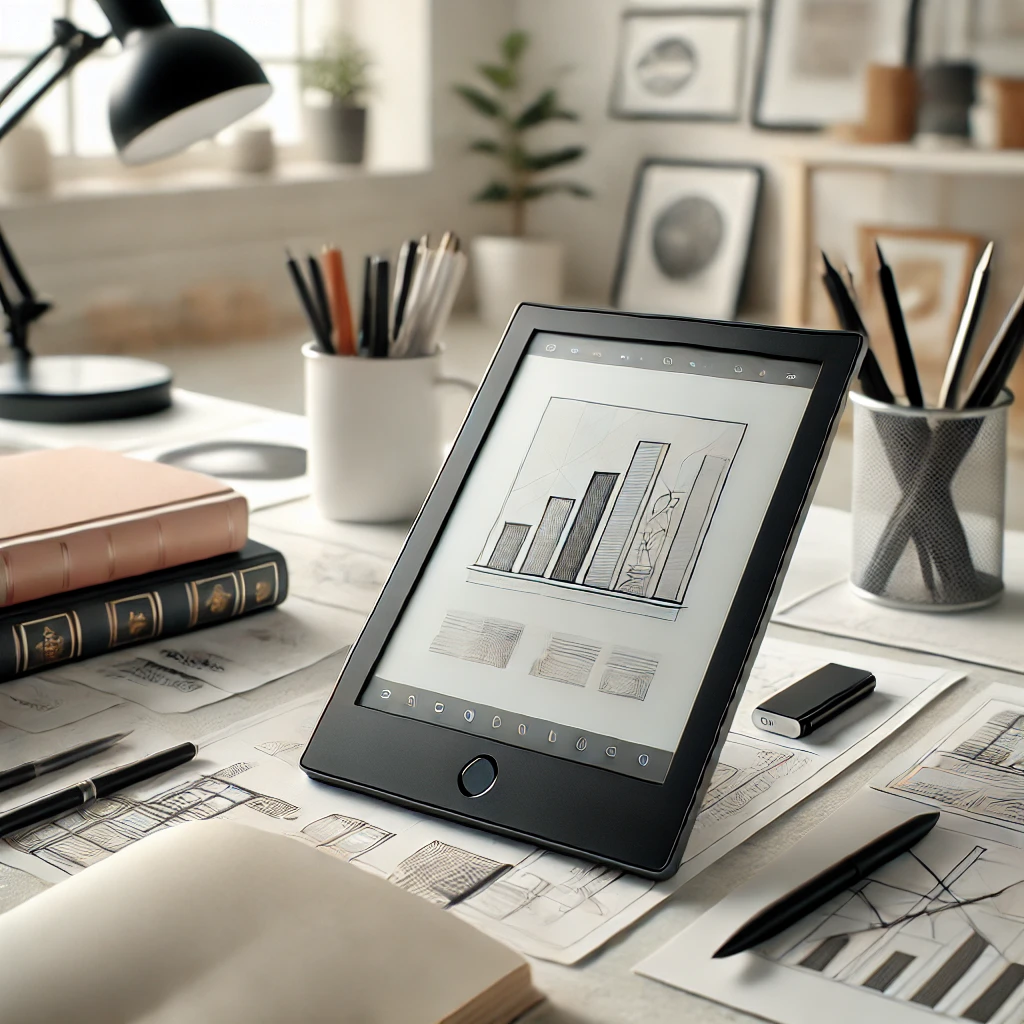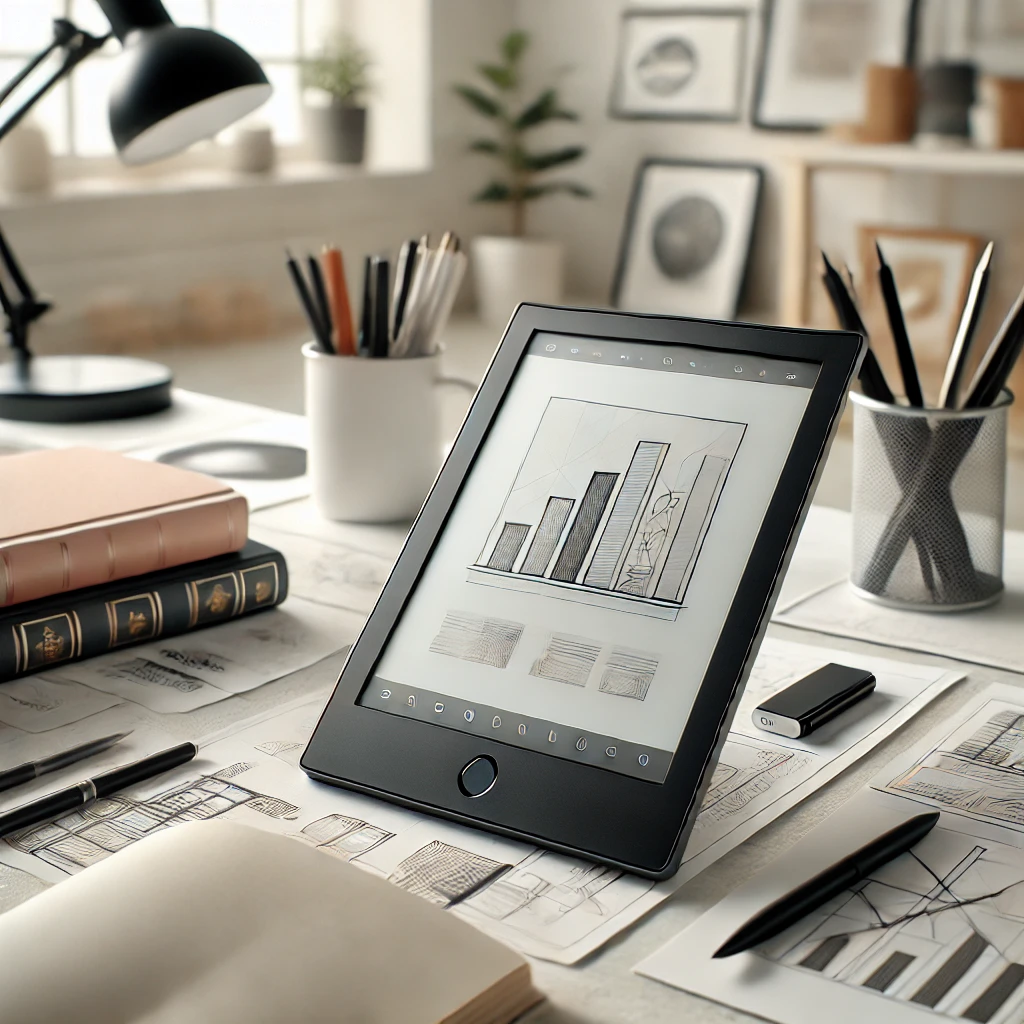
1. Key features and benefits of electronic paper
How does electronic paper work?
Electronic paper, often called e-ink, uses microcapsules that rearrange pigments when electric fields are applied. This mechanism allows the display to hold an image or text even when disconnected…
Paper-like feel: Eye-friendly display
One of the standout features of electronic paper is its resemblance to actual paper. Unlike traditional screens, electronic paper reflects ambient light rather than emitting its own, making it significantly easier on the eyes during prolonged use. This attribute is particularly advantageous for users who spend hours reading or working on the device, as it reduces eye strain. Additionally, the matte finish of most electronic paper screens eliminates glare, ensuring a seamless reading or sketching experience even under bright light. For instance, many professionals and students have switched to electronic paper devices for note-taking during lengthy lectures or meetings.
Unmatched battery efficiency
Electronic paper devices are known for their remarkable battery life. Unlike traditional tablets or smartphones that require frequent charging, electronic paper screens consume power only when updating the display. This efficiency allows some devices to last for weeks or even months on a single charge, depending on usage patterns. Such longevity is especially beneficial for individuals who frequently travel or work in environments where access to power outlets is limited. For example, a travel writer might use an electronic paper device to draft content during long trips without worrying about running out of battery.
2. Everyday uses of electronic paper
As a convenient digital notebook
Many users have adopted electronic paper devices as digital notebooks due to their lightweight design and versatile features. These devices allow users to jot down notes, brainstorm ideas, or organize thoughts without the need for physical paper. Unlike traditional notebooks, digital versions offer functions like cloud backup, text recognition, and the ability to erase or edit notes easily. For instance, a designer might sketch initial concepts on an electronic paper device and later refine them on a computer, streamlining the creative process.
Enhanced e-book reading experience
Electronic paper devices have revolutionized the way people read books. Their screen technology mimics the appearance of printed text, providing an experience similar to reading a physical book but with added benefits. Users can adjust font size, look up definitions, and store thousands of books in a single device. For example, students studying for exams can carry an entire library with them, making it easier to access multiple textbooks or reference materials on the go.
Simple sketching and drawing tool
For artists and hobbyists, electronic paper devices offer a unique medium for sketching and drawing. Their responsive touchscreens and high precision styluses allow for detailed illustrations, while the e-ink technology provides a natural feel akin to using pen and paper. Additionally, users can save and share their creations digitally, eliminating the need to scan or photograph their work. A budding artist, for instance, could use an electronic paper device to practice drawing techniques or create quick sketches while traveling.
3. Creative ideas for using electronic paper
Brainstorming tool for generating ideas
Electronic paper devices serve as excellent tools for brainstorming sessions. Their ability to seamlessly integrate handwritten notes with digital features makes them ideal for capturing and organizing ideas. For example, a project manager could use an electronic paper device during team meetings to visualize concepts and share updates in real-time, fostering collaboration and innovation.
Smart calendars and task management
With the integration of calendar and task management apps, electronic paper devices can help users streamline their daily schedules. These devices allow users to prioritize tasks, set reminders, and track progress without relying on traditional planners. A busy professional might find it helpful to manage work deadlines and personal errands on a single platform, ensuring no detail is overlooked.
Designing rough drafts and patterns
For creative professionals, electronic paper devices offer a practical solution for drafting designs and patterns. Architects, for instance, can sketch floor plans or annotate blueprints directly on the device, while fashion designers can create initial patterns before moving to production. This capability not only saves time but also reduces reliance on physical resources, contributing to more sustainable practices.
4. Business applications of electronic paper
Replacing notebooks during meetings
In professional settings, electronic paper devices are increasingly being used as substitutes for traditional notebooks. They allow users to take notes, annotate documents, and share meeting minutes efficiently. For example, during a board meeting, participants can collaborate on a shared document using their electronic paper devices, eliminating the need for printed copies.
Signing documents electronically
Electronic paper devices equipped with e-ink technology are ideal for signing contracts and other legal documents. Their high precision and realistic pen input mimic the experience of signing on paper, making them suitable for businesses aiming to transition to paperless workflows. A real estate agent, for instance, could use an electronic paper device to finalize property agreements with clients on-site.
Streamlining document review
For professionals who frequently review and annotate documents, electronic paper devices provide an efficient solution. They allow users to highlight text, add comments, and save changes directly on the document. An editor working on a manuscript could use the device to mark up drafts and share feedback with authors instantly, ensuring smoother communication and faster revisions.
5. Choosing the right electronic paper device
Size and resolution considerations
When selecting an electronic paper device, it is important to consider the size and resolution that best suit your needs. Smaller devices are more portable, making them ideal for casual readers, while larger models with higher resolutions are better suited for detailed work like sketching or annotating documents. A graphic designer might prefer a large-screen device for drawing intricate designs, while a commuter might opt for a compact model for reading during travel.
Durability and portability
Durability and portability are key factors when choosing an electronic paper device. Users who frequently carry their devices should prioritize lightweight and sturdy models to ensure ease of use and long-term reliability. For instance, a journalist covering field assignments might choose a rugged device that can withstand the rigors of travel and outdoor conditions.
Comparing popular models
With numerous electronic paper devices available on the market, comparing features, prices, and user reviews is essential to making an informed decision. For example, the Kindle Scribe and Remarkable 2 are popular choices, each offering unique features tailored to different user preferences. Understanding these differences can help users select a device that aligns with their specific requirements.
Conclusion
Electronic paper devices have transformed the way we work, read, and create. By understanding their features and exploring various applications, users can unlock their full potential and enhance their daily lives. Whether for personal use, creative projects, or professional tasks, electronic paper devices offer a versatile and sustainable alternative to traditional methods.



Comment